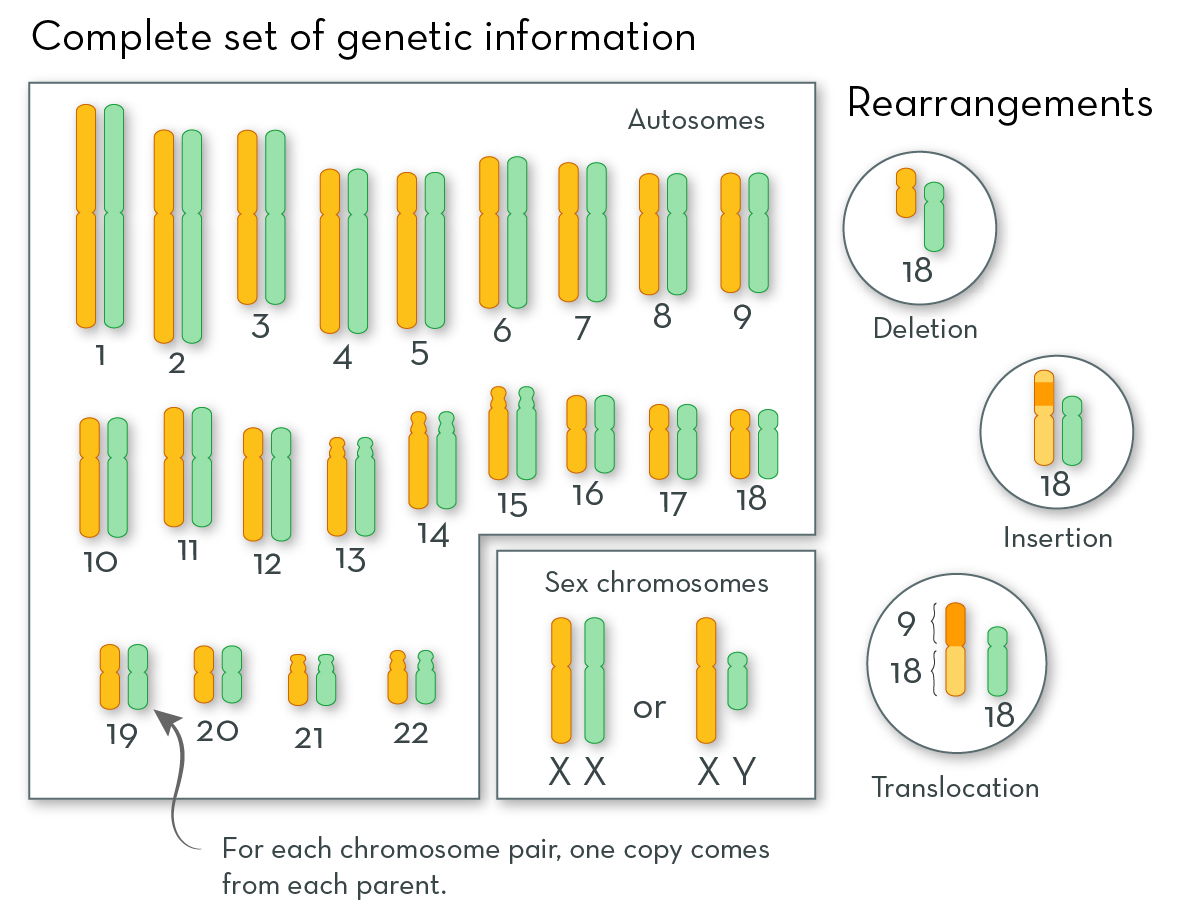
A complete set of genetic information consists of 46 chromosomes. Each parent contributes 23 chromosomes.

A complete set of genetic information consists of 46 chromosomes. Each parent contributes 23 chromosomes.
This slideshow zooms in on one chromosome pair to show how recombination works. (All of this person’s chromosomes are shown in orange. The lighter orange chromosomes came from her mother; the darker ones came from her father.)

Rearrangements fall broadly into two categories: balanced and unbalanced.
A person with a balanced chromosomal rearrangement has a complete set of genetic information. However, some chromosome pieces have been moved around.
Most of the time, people who have a balanced chromosomal rearrangement are perfectly healthy. But some balanced rearrangements have an effect. For example, if a chromosome break falls in the middle of a gene, the function of that gene may be disrupted.
Many people with balanced rearrangements are unaware of their condition until they try to have children. The biggest issue they face is that they are likely to pass an unbalanced rearrangement to their children. They may have trouble conceiving, they may have a child with a genetic disorder, or they may experience multiple pregnancy losses. The effects depend on the chromosome regions involved. Any of these situations would prompt genetic testing of the parents, which would reveal the translocation.
Balanced rearrangements are fairly common, affecting about 1 in 1,000 people. They make up a large proportion of couples seeking fertility treatment.
In an unbalanced rearrangement, pieces of chromosomes are either missing or duplicated. Missing information is called a deletion, and duplicated information is called an insertion. Some unbalanced rearrangements also involve translocation: where a piece of a chromosome is broken off and reattached to a different chromosome.
Most unbalanced rearrangements have an effect. But the effects vary greatly, depending on which genes are on the chromosome pieces that are missing or duplicated.
Unbalanced rearrangements are common in the children of parents who carry a balanced rearrangement. But they can also happen in the children of parents who are genetically normal. If a genetically normal couple has one child with a chromosomal rearrangement, they are unlikely to have a second child with the same condition.